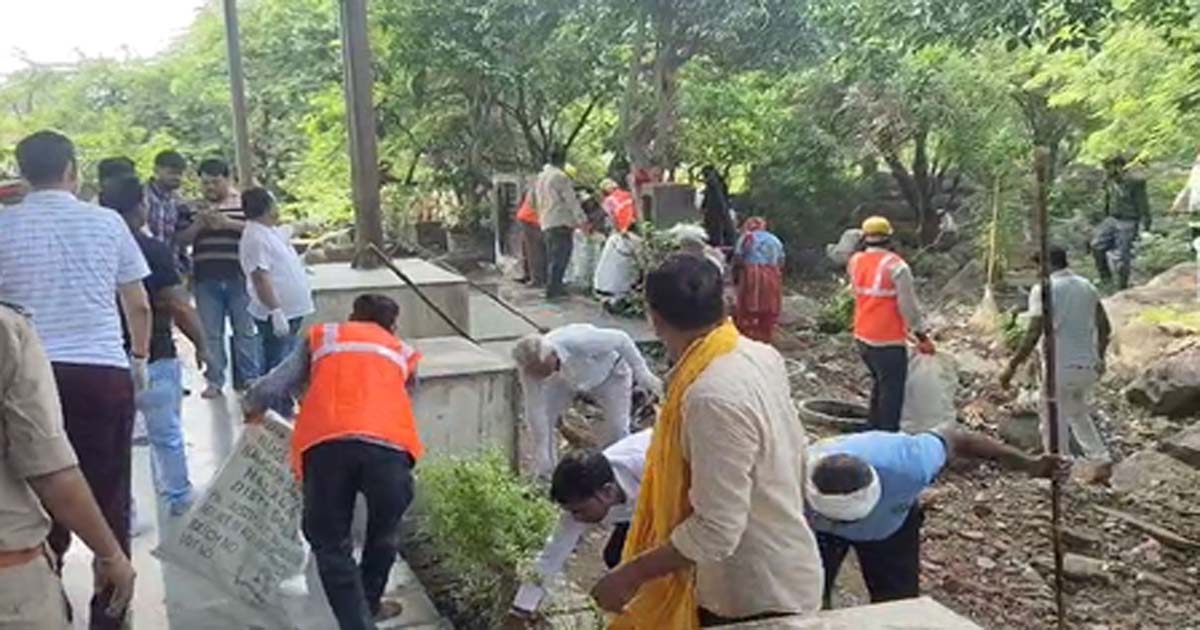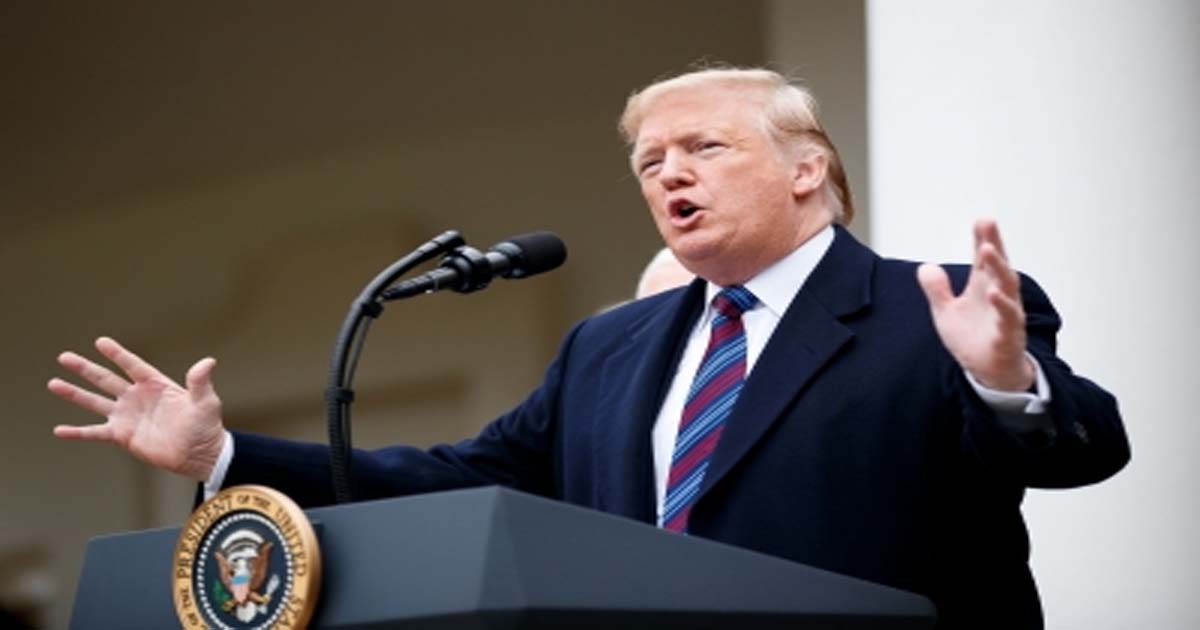Business
Budget 2022: Increase in custom duty on Aluminium scrap from 2.5 to 10% is key expectation

Steel Industry.
As the Indian economy pushes forward to grow at 9 per cent and above over the next few years, a key challenge for the country would be to rebalance its energy needs in favour of renewable sources by 2030 to 50 per cent as per the Paris agreement.
This is where the Aluminium sector will play a greater than ever before role. Extensive growth in electric vehicles, renewables, modern infrastructure, energy efficient consumer goods and greater dependence on strategic sectors such as aerospace and defence, will drive Aluminium consumption to grow at CAGR of 10 per cent or more. For example, Aluminium usage in EV battery is 40-50 per cent more than a normal ICE. Being 3 times lighter than steel it aids in fuel efficiency making it an efficient choice for EVs.
However, the Indian aluminium industry is struggling to revive itself over the last two years following the unprecedented Covid pandemic. The declining domestic producers market share with surging imports coupled with significant cost escalation for primary producers due to a rise in input costs of critical raw materials, escalating ocean freights & logistics costs due to container shortage, current coal crunch situation etc, is restricting the industry’s ability to support the future of the country at a time when India cannot rely on import sources alone to fuel this growth.
To give relief to the sector, there is a need for urgently looking at the duty structure. The basic custom duty on Aluminium and Aluminium scrap is not in line with other non-ferrous metals like Zink, lead, nickel and tin which is a huge disadvantage for domestic Aluminium producers. The industry expects increase in tariff rate of basic custom duty or peak custom duty rate from existing 10 per cent to 15 per cent. Currently custom duty on Primary Aluminium is 7.5 per cent, Downstream Aluminium is 7.5 per cent to 10 per cent and Aluminium scrap is only 2.5 per cent. This is the reason why despite having significant presence of primary Aluminium capacity and potential to generate sufficient domestic scrap, India’s consumption of scrap is 100 per cent import dependent. The way forward is to increase custom duty on Aluminium srap from 2.5 to 10 per cent.
Primary aluminium industry is facing severe threat from the increasing import of Aluminium scrap. The share of scrap in total imports increased from 52 per cent in FY-16 to 66 per cent in FY-21. resulting in Forex Outgo of $2 billion (Rs 15,000 crore).
What is also affecting the Indian industry is China’s renewed measures to restrict Scrap imports through National Sword Policy, which is leading to greater inflow of scrap into India. China imposed 25 per cent duty on Aluminium Scrap imports from USA, and classified Aluminium Scrap in restricted import list from July, 2019, with plan to completely ban all scrap and waste imports. Post that the share of import from the US in China’s total Aluminium scrap imports has declined from 53 per cent in 2017 to just 16 per cent in 2019. India has overtaken China as world’s largest aluminium scrap importer due to Chinese measures. As a result, entire global scrap chain is shifted to India in absence of any quality or BIS standards for scrap recycling/ usage and imports in the country. A major threat is from US scrap imports, as US is diverting large volume of scrap to India, since EU and other developed countries have stringent standards for scrap. The import from US as share of India’s total scrap imports increased from 8 per cent in FY16 to 24 per cent in FY21.
This precarious situation can be resolved by safeguarding the domestic industry against these non-essential imports in the upcoming union budget.
The industry demands increasing the basic custom duty on Chapter-76 (Aluminium & articles).
National
Police in Srinagar attach property worth Rs 1.5 crore under UAPA

Srinagar, July 5: Continuing its drive against terrorism, Jammu and Kashmir (J&K) Police in Srinagar district on Saturday attached property worth Rs 1.5 crore under the Unlawful Activities Prevention Act (UAPA).
A police statement said on Saturday, “In a decisive move against the terror ecosystem and to dismantle its supporting infrastructure, Srinagar Police has attached a residential property — comprising 8 marlas and 202 sq. ft. of land along with the building structure— estimated to be worth approximately Rs 1.5 crore.
“The property, located at Mir Masjid Mohalla, Shallabagh Khanyar, and falling under Survey Nos. 3674/1147 and 3677/1148, is recorded in the name of Mohammad Yousuf Shah son of Hafiz Waliuallah Shah.”
The police statement added, “It is currently in the possession of Masood Hussain Shah son of Mohammad Yousuf Shah. The attachment has been carried out under the relevant provisions of the Unlawful Activities (Prevention) Act (UAPA) in connection with FIR No. 48/2024 under Sections 109 of the Bharatiya Nyaya Sanhita (BNS), 7/27 of the Indian Arms Act, and Sections 16, 18, 19, 20, and 39 of the UAP Act, registered at Police Station Khanyar.
“Investigations have established that the property was acquired through illegal proceeds linked to terrorist activities. Acting under Section 25 of the UAP Act, the immovable property has been formally seized and attached following due legal procedure.
“Through this attachment notice, the owner is prohibited from selling, leasing, or transferring the said property in any manner. This action is part of the sustained campaign of Srinagar Police to dismantle the terror ecosystem in a systematic manner.
“By targeting and crippling the financial networks of terrorist organisations, Jammu & Kashmir Police aims to curb acts detrimental to the security and integrity of the nation. Srinagar Police reiterates its unwavering commitment to eradicating terrorism and safeguarding public peace.”
National
World-famous Mudiya Mela in Govardhan from tomorrow, cleanliness campaign launched

Govardhan (UP), July 5: As the world-famous Mudiya Mela will kick off in Uttar Pradesh’s Govardhan on Sunday, authorities have launched a cleanliness campaign.
Over 2 crore pilgrims are expected to reach Govardhan for the mela and perform Parikrama.
The cleanliness campaign, led by District Magistrate C.P. Singh, started on Saturday and focussed on cleanliness in key areas, including Parikrama Marg, Daanghati temple, and Giriraj ji.
DM Singh swept the land near the Govardhan temple, spreading the message of cleanliness.
As per the directions of the Uttar Pradesh government, efforts are being made to provide pilgrims with proper facilities and clean surroundings, he said.
The District Magistrate said people use polythene bags and indulge in littering as they don’t care about cleanliness, but now, as prior warnings have been given, strict action will be taken against violators.
The DM pointed out that maintaining cleanliness in the area was the responsibility of the temple management, but as it failed, “our team and locals of Govardhan are carrying out the cleanliness drive.”
Highlighting the importance of cleanliness, DM Singh said, “We aim to clean the entire Parikrama marg.”
He also shared that notices have been issued to those shops which have encroached on public land. The cleanliness campaign was made successful with the efforts of Govardhan SDM Neelam Srivastava, Govardhan Tehsil and Panchayat.
For the unversed, Mudiya Mela is observed in remembrance of Sanatan Goswami, the principal disciple of Lord Chaitanya Mahaprabhu.
Legends have it that when Sanatan Goswami passed away, his disciples did parikrama of the Govardhan after tonsuring their heads. Since then, this tradition has been followed.
Notably, the 468-year-old tradition continues to draw a sea of devotees.
The devotees perform a 21-km-long Parikrama of Govardhan.
The belief with the yatra is that it bestows peace and prosperity on the devotees.
Business
12 nations to get US tariff letters on Monday, says Trump

New Delhi/Washington, July 5: US President Donald Trump has signed tariff letters on exports from 12 countries, which are expected to be sent out on July 7 (Monday).
Speaking to the media aboard Air Force One, the US President said the names of the countries which will receive the letters would only be revealed on Monday.
“I signed some letters and they’ll go out on Monday, probably 12. Different amounts of money, different amounts of tariffs,” he told reporters.
“The letters are better. It is much easier to send a letter,” Trump added.
Trump has suggested that the reciprocal tariffs could go even higher, potentially reaching 70 per cent for some countries, and take effect from August 1.
The US President in April unveiled a base tariff of 10 per cent on most goods entering the country, along with higher rates for certain countries, including China. Those elevated tariffs were later suspended till July 9.
Washington has concluded trade agreements with two countries – the United Kingdom and Vietnam.
Meanwhile, India’s high-level official delegation, led by chief negotiator Rajesh Agrawal, has returned from Washington without reaching a final agreement with US officials on the sensitive issue of trade in agricultural and dairy products that the US is pushing for.
However, there is still a glimmer of hope that an interim bilateral trade agreement may be reached at the highest political level in the two countries before the July 9 deadline.
The Indian team was in Washington for negotiations on an interim trade agreement with the US from June 26 – July 2.
According to Commerce Minister Piyush Goyal, India will not hurry into signing a free trade agreement under pressure from any deadline.
Speaking on the sidelines of an event in the national capital, Minister Goyal emphasised that India is ready to make trade deals in the national interest but it “never negotiates trade deals with a deadline”.
The US is seeking broader market access for its agricultural and dairy products, which is a major hurdle, as for India, this is a livelihood issue for the country’s small farmers, and hence, is considered a sensitive area.
While India is looking to secure an exemption from President Trump’s 26 per cent tariffs by concluding an interim deal before July 9, it is also pushing for significant tariff concessions for its labour-intensive exports such as textiles, leather and footwear.
-

 Crime3 years ago
Crime3 years agoClass 10 student jumps to death in Jaipur
-

 Maharashtra9 months ago
Maharashtra9 months agoMumbai Local Train Update: Central Railway’s New Timetable Comes Into Effect; Check Full List Of Revised Timings & Stations
-

 Maharashtra9 months ago
Maharashtra9 months agoMumbai To Go Toll-Free Tonight! Maharashtra Govt Announces Complete Toll Waiver For Light Motor Vehicles At All 5 Entry Points Of City
-

 Maharashtra9 months ago
Maharashtra9 months agoFalse photo of Imtiaz Jaleel’s rally, exposing the fooling conspiracy
-

 Crime9 months ago
Crime9 months agoBaba Siddique Murder: Mumbai Police Unable To Get Lawrence Bishnoi Custody Due To Home Ministry Order, Says Report
-

 National News9 months ago
National News9 months agoMinistry of Railways rolls out Special Drive 4.0 with focus on digitisation, cleanliness, inclusiveness and grievance redressal
-

 Maharashtra8 months ago
Maharashtra8 months agoMaharashtra Elections 2024: Mumbai Metro & BEST Services Extended Till Midnight On Voting Day
-

 National News10 months ago
National News10 months agoJ&K: 4 Jawans Killed, 28 Injured After Bus Carrying BSF Personnel For Poll Duty Falls Into Gorge In Budgam; Terrifying Visuals Surface
















